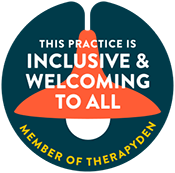How to Work on Acceptance
What is Acceptance
Acceptance involves releasing resistance to the reality of past or present situations or experiences. It means embracing reality as it is, whether you like it or not. Acceptance acknowledges that life sometimes includes pain. Resistance to what is happening creates suffering, so to reduce suffering, strive for acceptance. This blog post offers practical tools to help you move toward acceptance.
Tips for Acceptance Work
Body-Based: Relax your body—soften it, open your hands, drop your shoulders, and uncross your arms. Notice how this feels compared to having a tense body with crossed arms and raised shoulders.
Mental: Picture someone asking you these questions and respond with "no" to each: "Can I ask you a question?" "Are you open to a different perspective?" "Can you listen fully without preparing to respond?" Notice how your body feels when you answer "no." Now imagine responding "yes" to each of the previous questions. How does that feel different? Do you notice a release or expansion? This isn't about saying "yes" to everything or ignoring intuition but about intentionally opening your mind to receiving rather than guarding against it.
Behavior: We often believe we need confidence or readiness before acting, but that's not the case. Change occurs when you act despite doubt, anxiety, or fear. Consider the behaviors that align with how you wish to present yourself to the world. Find the space between stimulus and response, and make a decision that reflects who you want to be.
Know Your Values: What truly matters to you? If this feels unclear, consider what you want said about you at your eulogy, or think about your life regrets. Regrets highlight what you value. Let these values guide your decisions, and if they aren't, practice self-compassion as you work on accepting your current reality.
Let Go of What is Out of Your Control: While the saying may seem cliché, it holds wisdom. You can only control yourself. The desire for control can create tension in yourself and your relationships, exacerbating problems. People have their own lives, stories, and choices. If you're struggling to accept how others show up in your life, remind yourself it's up to them to change. Focusing on their lack of change only creates suffering in you. Remember, they are in their own driver's seat, and so are you. Focus on what you can control—you.
Allow Yourself to Grieve: Acceptance can be difficult because it often brings up grief. Accepting your current reality, such as the realization that parents, partners, or friends won't change, can make you grieve the person you wish they were. You might feel the reality of your life being different from what you desire. Once you fully feel and accept these emotions, it allows for transformation and movement forward. The tension tied to anger or expectations of others loosens, enabling you to focus your energy on yourself and your life.
Working on acceptance is a journey that requires patience, self-awareness, and compassion. It's about letting go of resistance and embracing reality, knowing that this is the path to reducing suffering. By incorporating body-based techniques, mental flexibility, aligned behaviors, value recognition, and the ability to let go of control, you can move towards a more peaceful and accepting state of mind. Remember, it's essential to allow yourself to grieve when necessary, as this paves the way for transformation.
Acceptance does not mean resignation; it means understanding that there are aspects of life we cannot change. This understanding empowers you to focus on what you can control—your actions, your attitude, and your perspective. By doing so, you invite growth, resilience, and a deeper connection to yourself and the world around you. Embrace this journey with an open heart and mind, and remember that acceptance is not a destination but a continual process of learning and evolving.




